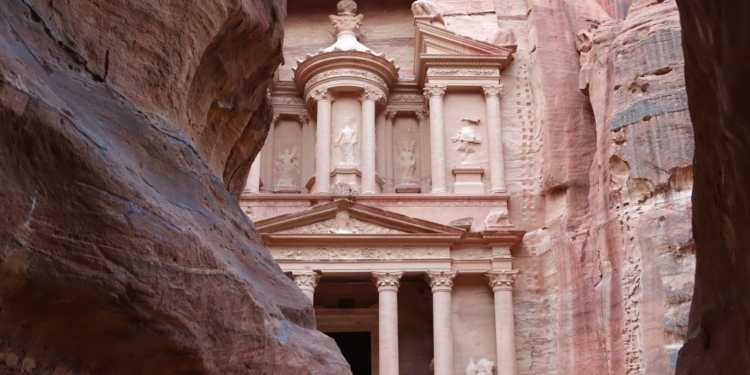Contents
- 1 Petra: A City Born of Stone
- 2 Sandstone: The Lifeblood of the Ancient City Petra
- 3 Mastery Over Water: How Ancients Created an Oasis in the Middle of the Desert
- 4 The Role of Trade in Petra’s Prosperity: What Ancient Nabataeans Traded
- 5 The Mystery of the Curved Sandstone Tombs of Petra
- 6 The Decline of Petra: What Led to the Decline of the Once Peaceful and Prosperous Ancient City of Petra?
- 7 Secrets Hidden in the Stone: Uncovering the Mystery of Petra’s Origins
- 8 Legacy and Lessons from Petra: What Ancient Nabataeans Teach Us About Human Ingenuity
- 9 Petra Today: How is the Ancient City Today?
Nestled in the rugged desert canyons of modern-day Jordan lies Petra, an ancient city hewn from vibrant sandstone cliffs. Known as the “Lost City of Stone,” Petra was a marvel of ancient engineering, architectural brilliance, and resource management. This UNESCO World Heritage Site, once home to the Nabataeans, continues to captivate the imagination of historians, archaeologists, and travelers alike.
The word “Petra” has its origins from the ancient Greek words “for stone”.
Petra: A City Born of Stone
Petra’s defining characteristic is its monumental structures carved directly into the sandstone cliffs. From the grand Treasury (Al-Khazneh) to the Monastery (Ad-Dayr), the Nabataeans demonstrated unparalleled craftsmanship. These carvings were not mere facades; they were symbols of power, wealth, and reverence for their environment.
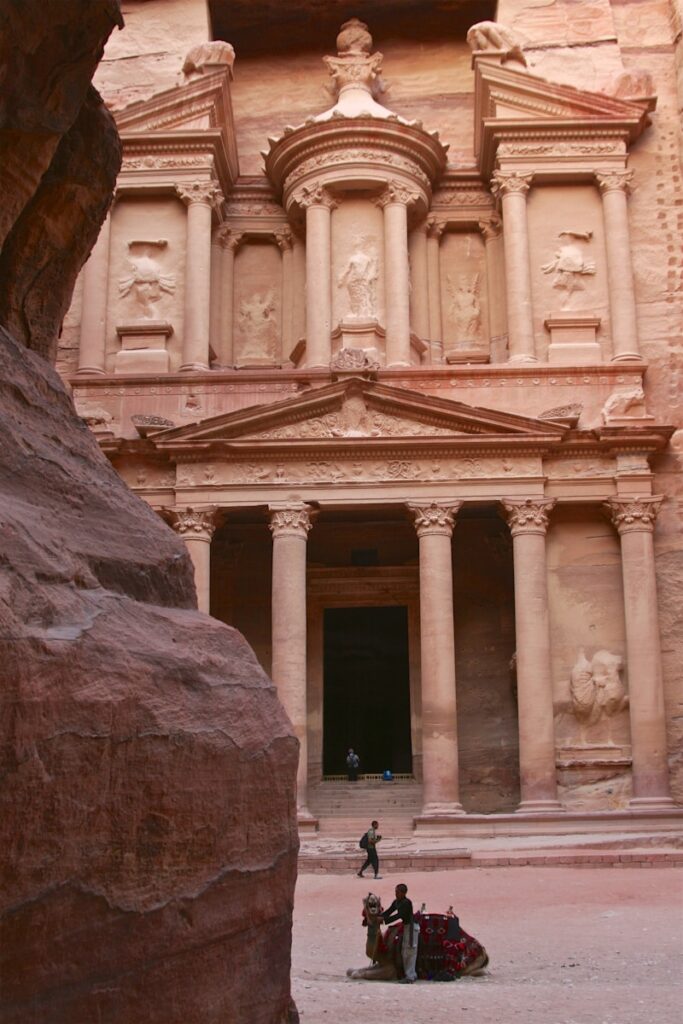
How Did Nabataeans Carve Out Petra from the Sandstone Cliffs?
The Nabataeans utilized tools such as chisels to shape intricate designs into the rock. They employed a “top-down” carving method, starting at the top of the cliff and working their way down. This ingenious approach allowed them to create elaborate facades without scaffolding, leaving no trace of their construction platforms.
Using pins and wooden planks on top, the ancients were able to consistently carve the rock starting at the top, until its completion on ground level. Ingeniously, once they reached about halfway down, the rubble from their carving would act as a ramp (and platform) they could stand on and continue carving.
The Nabataeans’ respect for sandstone as a “living material” showcased their intimate knowledge of its properties. The reddish hues of the rock, shaped by eons of wind and water, were carefully preserved, with the sandstone itself becoming an essential tool for polishing their creations.
Sandstone: The Lifeblood of the Ancient City Petra
The vibrant sandstone cliffs of #Petra were more than just a canvas for the Nabataeans; they were a vital resource. Sandstone’s malleability allowed for the creation of intricate carvings, while its natural composition helped the structures endure the harsh desert climate. The Nabataeans’ ability to adapt their techniques to the unique geological properties of the rock demonstrates their advanced understanding of their environment.
Sponsored: Complete surveys and watch videos to earn on ZoomBucks. We may earn a commission.
Mastery Over Water: How Ancients Created an Oasis in the Middle of the Desert
The desert surrounding Petra is unforgiving, with scant rainfall and extreme temperatures. Yet, the Nabataeans transformed this barren landscape into a thriving oasis through their mastery of water management.
Petra’s water system was a marvel of ancient hydraulic engineering. The Nabataeans constructed a network of channels, aqueducts, and reservoirs to capture, store, and distribute water. Ground-penetrating radar has revealed hidden channels beneath the city, which transported water from springs like Ain Musa, located five miles away. Their pipelines, built with a precise four-degree slope, prevented leaks and ensured efficient water flow.
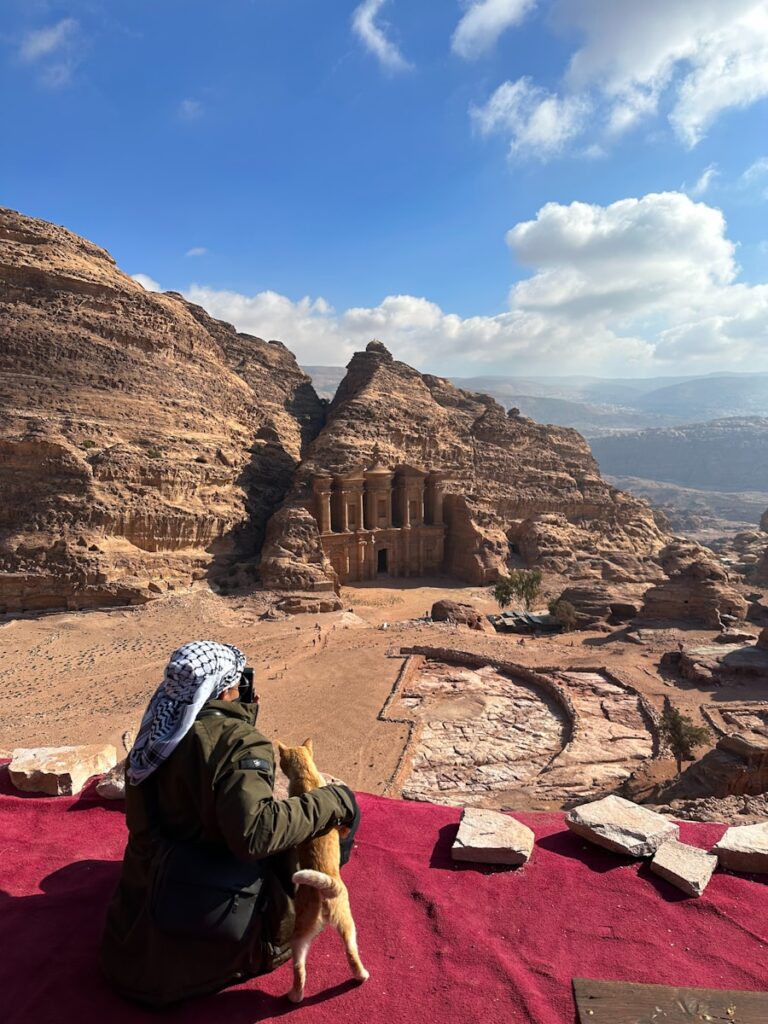
This system not only sustained the population of 30,000 but also allowed for luxuries such as ornamental pools, fountains, and garden terraces. These features, reminiscent of modern opulence, showcased the Nabataeans’ ability to combine functionality with aesthetic appeal.
The creation of this water infrastructure was no small feat in a region prone to flash floods. Ingenious dams and channels redirected water away from the city, protecting its structures and people from devastation. The Nabataeans’ ability to harness and control water was vital to their survival and success.
The Role of Trade in Petra’s Prosperity: What Ancient Nabataeans Traded
Petra’s location at the crossroads of ancient trade routes was pivotal to its success. The Nabataeans controlled the Incense Road, a vital trade route that connected the Arabian Peninsula to the Mediterranean. This control allowed them to amass immense wealth by taxing the caravans carrying valuable goods like frankincense, myrrh, spices, and textiles. These were crucial luxuries at around the time of the birth of Christ, and brought in tremendous wealth for the desert tribe. Notably, the Bible tells us that gold, frankincense, and myrrh were the three gifts the three wise men took to Jesus’ manger.
Related: The Man Who Found the Garden of Eden
The city’s prosperity is reflected in its grand structures and the fusion of architectural styles from various cultures, including Egyptian, Greek, Roman, and Mesopotamian influences. These styles not only signify the Nabataeans’ openness to cultural exchange, but also their ability to adapt and innovate.
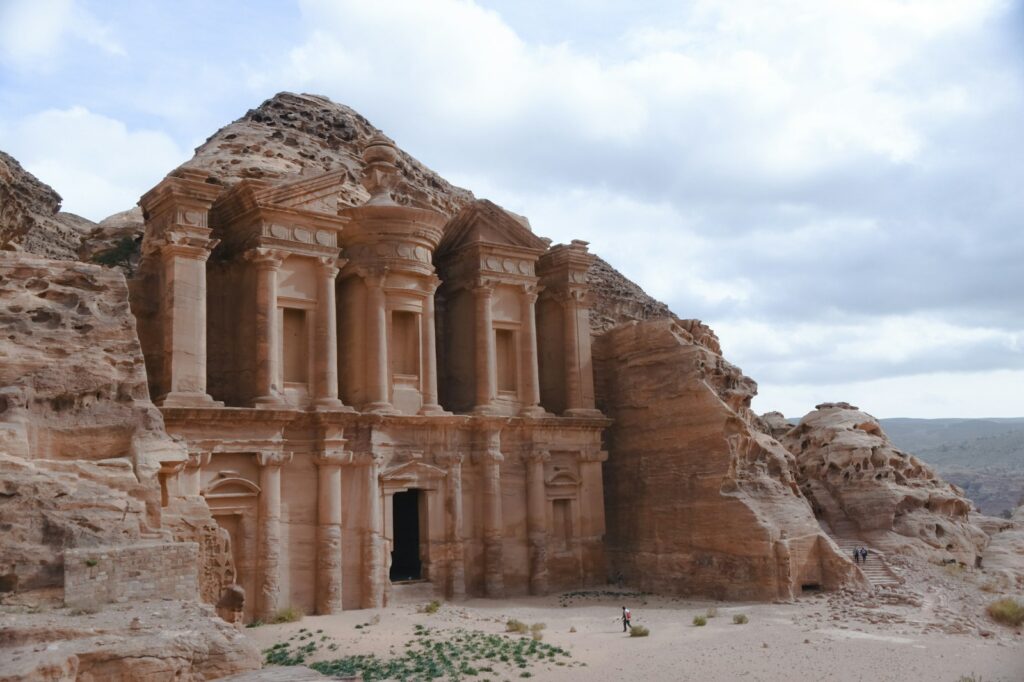
Petra was more than just a waypoint for traders; it was a cosmopolitan hub where ideas, goods, and cultures converged. Its bustling markets and luxurious amenities must have left an indelible impression on the weary travelers who arrived there.
The Mystery of the Curved Sandstone Tombs of Petra
While Petra was a bustling metropolis, many of its most iconic structures, such as the Treasury and the Monastery, served as tombs rather than temples or residences. Inscriptions in Aramaic on these facades indicate their sacred purpose and warn against disturbance. Despite this, tomb raiders often desecrated these burial sites in search of treasures.
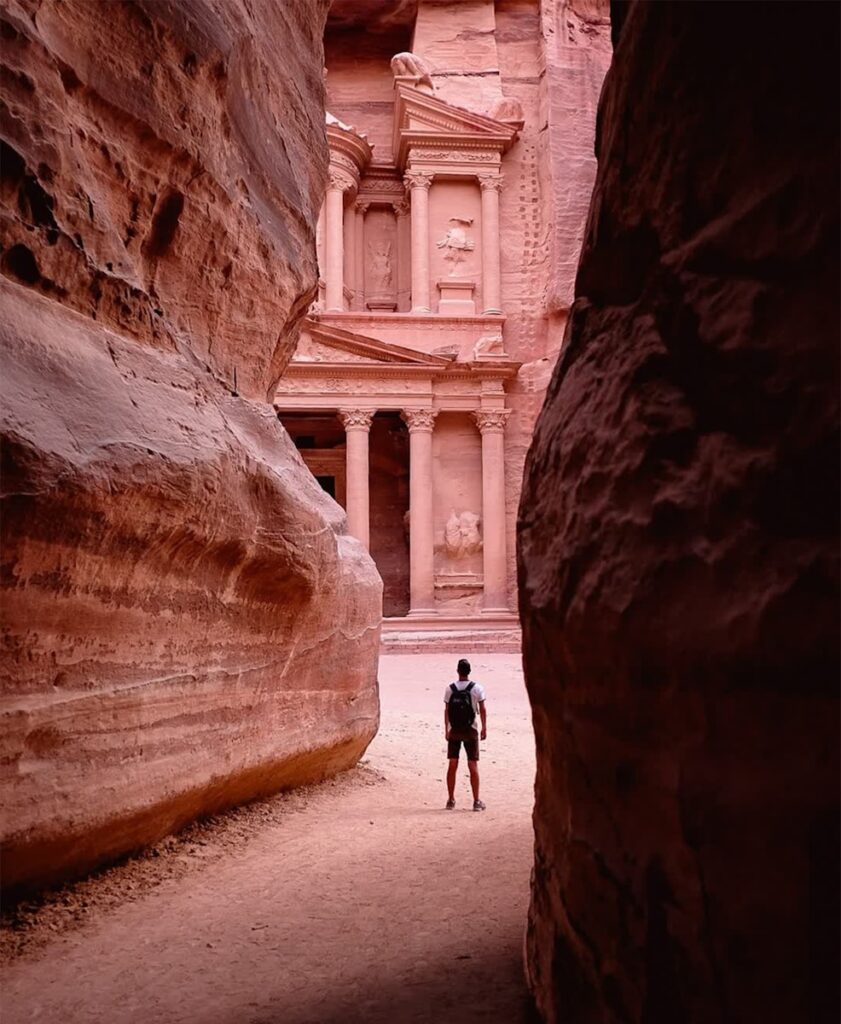
These tombs are a testament to the Nabataeans’ architectural genius and their spiritual beliefs. Their intricate designs blend religious symbolism with artistic mastery, leaving a lasting legacy of their reverence for the afterlife.
The true significance of these tombs extends beyond their aesthetic appeal. They serve as a window into the Nabataean worldview, offering glimpses of their rituals, societal structure, and the values they held dear.
The Decline of Petra: What Led to the Decline of the Once Peaceful and Prosperous Ancient City of Petra?
Despite its grandeur, Petra’s decline was inevitable. A devastating earthquake in 363 CE caused significant damage to the city’s infrastructure, including its water system. Archaeological evidence suggests that some areas, like the ornamental pools, had already fallen into disuse before the earthquake. Flash floods further eroded Petra’s main streets and structures.
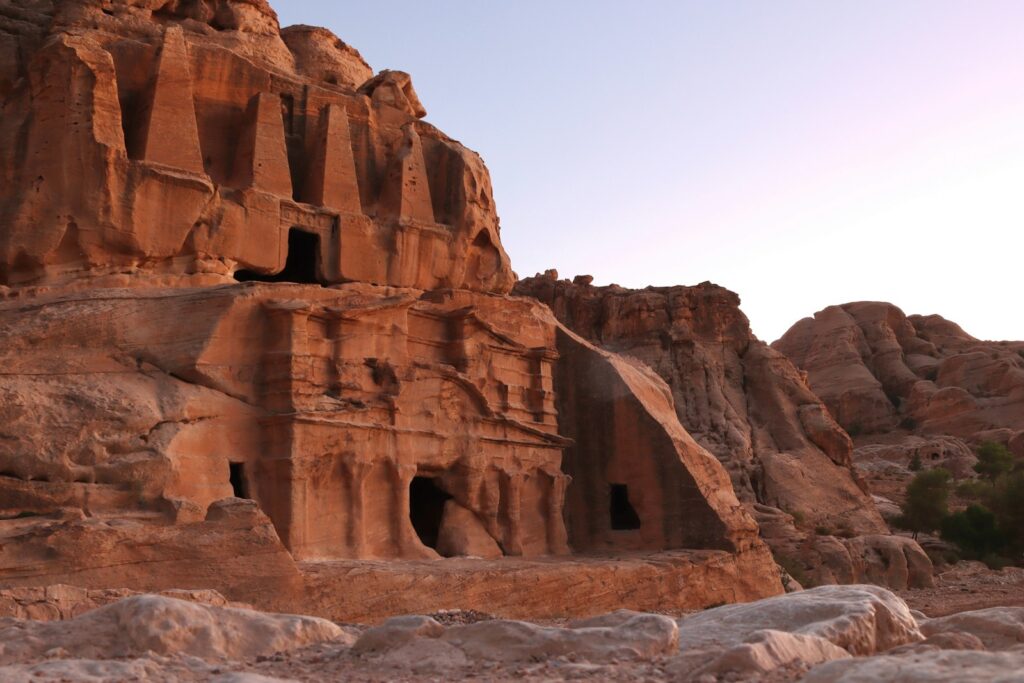
As trade routes shifted and the Roman Empire expanded, Petra’s importance waned. By the 7th century, the city was largely abandoned, fading into obscurity until its rediscovery in the early 19th century by Swiss explorer Johann Ludwig Burckhardt.
Related: Why I Think About the Roman Empire
Secrets Hidden in the Stone: Uncovering the Mystery of Petra’s Origins
Petra’s enigmatic nature extends to its very origins. The Nabataeans, once nomadic tribes, chose this remote and arid location to establish their thriving city. Why here? Perhaps the cliffs offered not only protection but also a spiritual connection to the land. Legends of hidden treasures and the mystery of the city’s transformation into a bustling center of trade continue to fuel intrigue.

Modern experiments, like recreating Nabataean carving techniques, have shed light on their methods but also underscored the immense skill involved. The Nabataeans’ ability to blend engineering with artistry remains unparalleled.
Related: What are Crafts and Why They are Important
Legacy and Lessons from Petra: What Ancient Nabataeans Teach Us About Human Ingenuity
Petra stands as a testament to human ingenuity, resilience, and the ability to thrive in seemingly inhospitable conditions. Its stunning architecture, advanced water management system, and rich cultural heritage continue to inspire awe and admiration.
For modern civilizations, Petra offers valuable lessons in sustainable resource management and the importance of respecting and adapting to one’s environment. Its story reminds us of the delicate balance between human ambition and nature’s constraints.
Related: The Urgent Realities of Climate Change: Facts and Solutions for a Sustainable Future
Petra Today: How is the Ancient City Today?
Today, Petra is one of the most visited archaeological sites in the world, drawing millions of tourists annually. Its breathtaking beauty and historical significance have earned it a place among the New Seven Wonders of the World. As researchers continue to uncover its secrets, Petra remains a symbol of the enduring legacy of the Nabataeans and their city of stone.
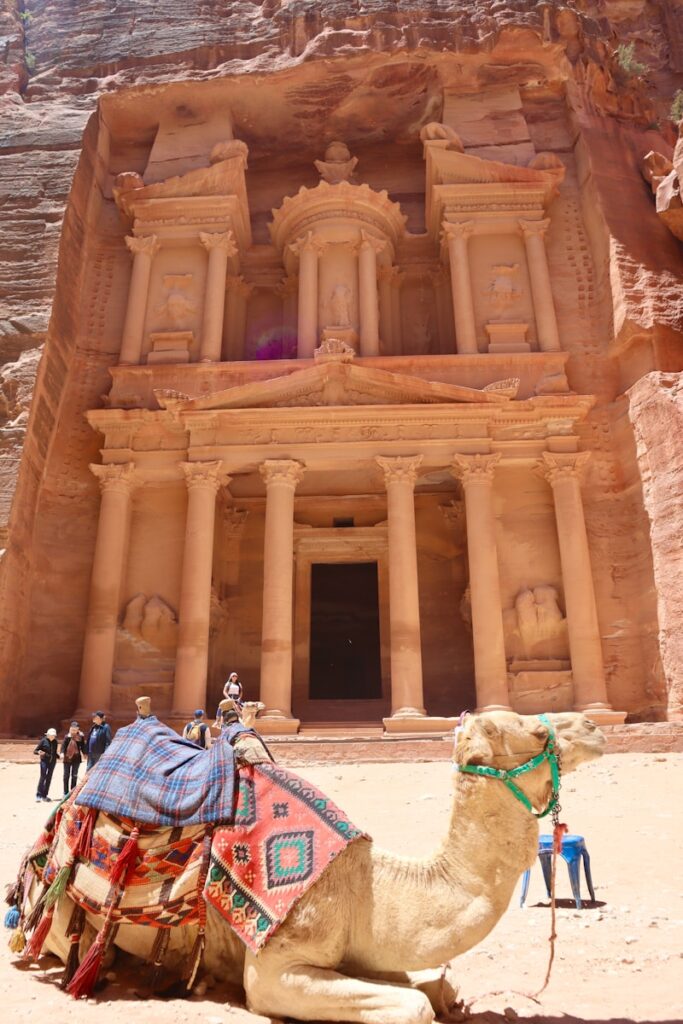
Whether through its awe-inspiring tombs, ingenious water systems, or the echoes of bustling markets from millennia past, Petra is a monument to the heights of human creativity and the enduring spirit of a lost civilization.
Through the shifting sands of time, Petra endures—a silent guardian of its people’s legacy and a timeless reminder of humanity’s boundless potential.
Watch the documentary Petra: Lost City of Stone on YT below. Courtesy of PBS Nova.
This article has been written with the help of AI for topic research and formulation.


